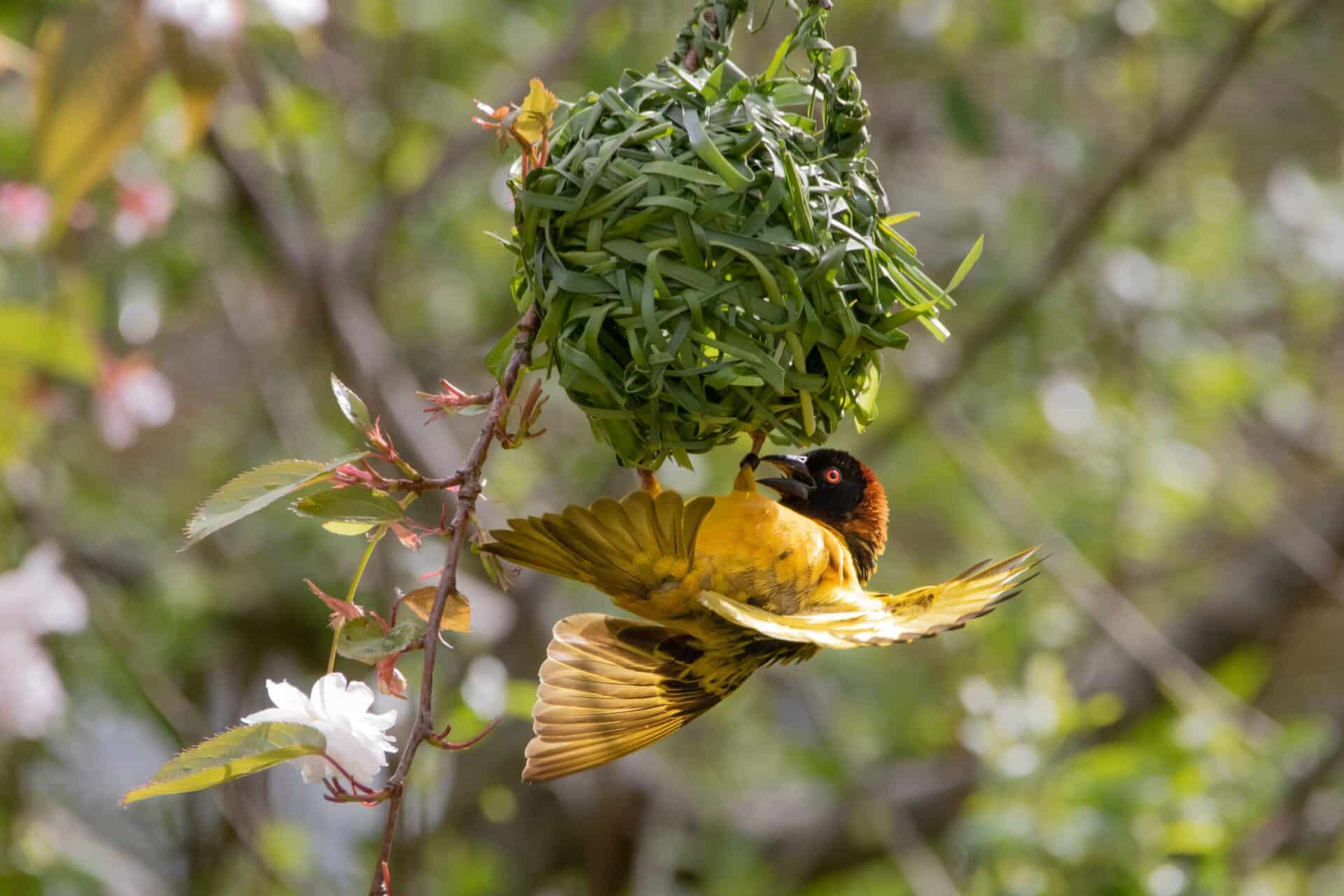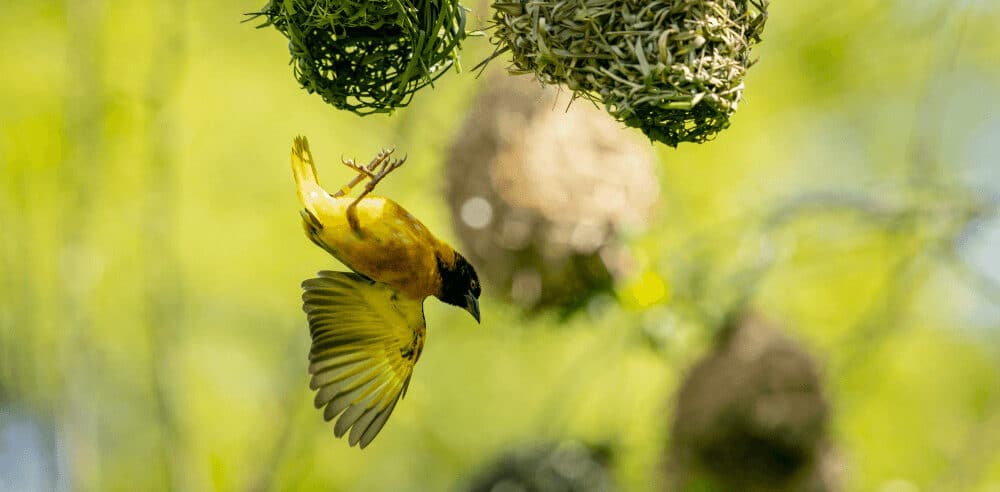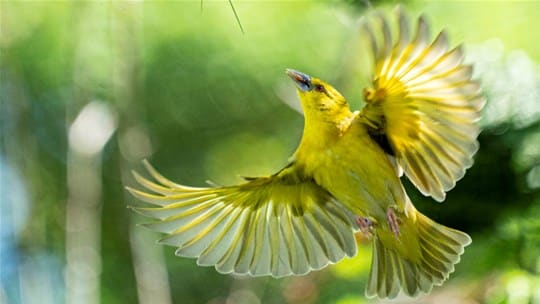Village weaver
Common Name: Village weaver
Scientific Name: Ploceus cucullatus
Experiments with captive weaver birds have suggested that these birds use colour to help them distinguish between different seed types, and they reject bitter-flavoured seeds.
The empty nests of village weavers are often used by other animals, including snakes, wasps, mice, bats and other birds.
Fast Facts
-
Status
Least concern
-
Size
17 cm tall
-
Weight
Males: 33-37 g, females: 26-40 g
-
Gestation
12-14 days
-
Young
2-4 eggs are laid
-
Life span
Up to 24 years
In the wild
Village weavers eat a wide variety of foods including seeds, fruits, nectar and insects.
This species is found throughout most of sub-Saharan Africa. They live in a variety of habitats including savannah, woodland, wetlands, farmland, villages and gardens.
Village weavers nest in large groups, sometimes with more than 200 nests in one tree and over 1000 nests in one colony. Males weave intricate nests, which are the shape of a ball with a spout-like entrance at the bottom. It takes males about 11 hours to weave a nest. Males may build up to 20 nests in one season, and they will destroy the nests if they haven’t attracted a female. Eggs may be white, pale green or blue, and either plain or with red-brown speckles. Usually only females will incubate the eggs and feed the chicks.
A variety of animals predate upon the eggs and chicks of village weavers, including snakes, monkeys, baboons, crows and birds of prey. African goshawks and bat hawks are known to predate on the adult birds as well as the nests.
These birds are regarded as one of the most abundant and widespread weaver species in Africa and no major threats to the species have been identified.


